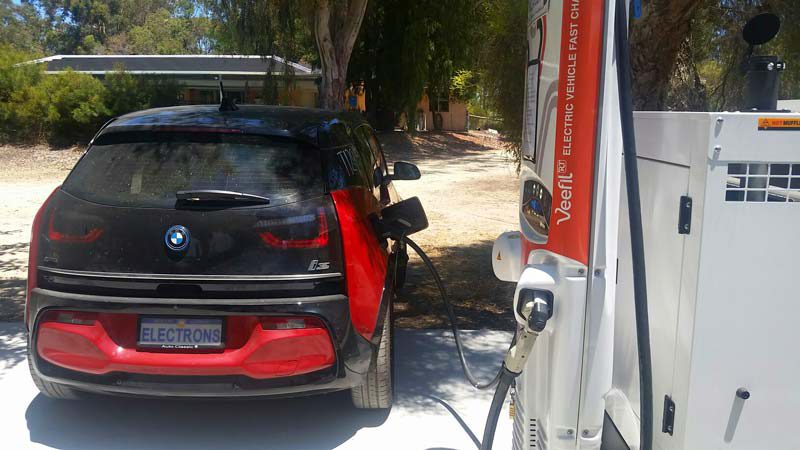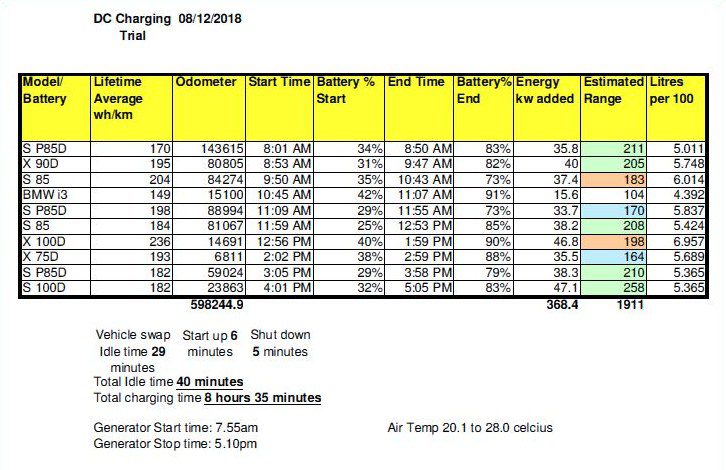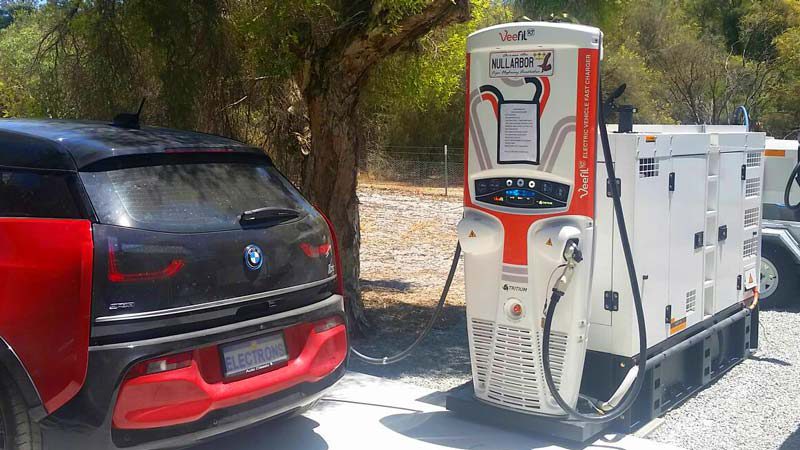The mantra of many a caryard salesman, when asked about electric cars, is, “But you can’t drive it across the Nullarbor.”
That’s not entirely true – there have been several inspiring examples of travellers who have struck out across the Australian desert under electric power, with Wiebe Wakker and Sylvia Wilson springing instantly to mind.
However, these trips have not been without challenges, because while some very bright sparks in the EV community have organised three-phase power outlets to charge EVs at remote locations such as roadhouses, phases are not always in balance due to diesel generator age and capacity, nor the points always accessible.
Jon Edwards, a retired engineer from Perth, is looking into a solution that may solve this issue for transcontinental travellers, at least until solar powered stations become the norm.
Read more: How biodiesel EV chargers could connect remote locations
Edwards and a group of fellow EV drivers gathered last week to test out whether powering an EV charger – in this case, a Tritium Veefil 50kW DC charger – with diesel would be not only a reliable solution, but whether the amount of diesel used is at least comparable to that of a diesel-fuelled car.

A veteran EV driver, now on his third BMW i3, he tells The Driven that driving to Adelaide and back in an electric car, “I felt like a third class citizen.”
“You’re out the back of some old power station, you’ve got to run a big long lead to plug into a dodgy power point.
“I’m a tax paying citizen and I’m driving an EV, why haven’t we got infrastructure to service us?” he says.
This sparked the idea to put together a solution that could solve this problem – without the hassle of installation that other fuelling options require.
Self-funding the project with an inexpensive diesel generator and the EV charger from Tritium, Edwards bolted the two together, dubbed it the “ChargePod”, and invited a number of EV drivers out to his property in Perth to test it out.

Chair of the Tesla Owner’s Club of WA (TOCWA) and AEVA WA branch member Rob Dean joined Jon in the tests, which took place in Perth, with 10 EV drivers total with Tesla Model S and X EVs, attending to assist in the test.
“They want to travel longer distances and …. like the idea of not doing any more damage [to the environment],” he tells The Driven.
He stresses that the point is not to offer a diesel-powered EV charger as the final solution, but as a reliable stop gap until installation of batteries and renewable-powered EV chargers become financially viable.
The testing steps outlined on the TOCWA website are methodical:
- ChargePod fuel tank topped up to 38mm from filler neck.
- Start charging car – record start and finish battery %, car’s average kWh consumption rate, kWh added to car, session start and finish times.
- Change subsequent cars and repeat recordings.
- Complete all 10 cars then shut down.
- Leave skid overnight to cool.
- Use mobile fuel truck with calibrated meter to refuel ChargePod to 38mm from filler neck.
- Record total fuel consumption for the test.
As is the calculation method:
Using total kWh added to all cars divided by the total fuel consumed an average kilowatt hour per litre diesel consumed is established – this is 3.392 kWh per litre which is the ChargePod performance.
Using the lifetime average kWh per kilometre for each car (this depends on the car and the driving style and is recorded continually by the car) an individual litres diesel equivalent per kilometre for each car tested can be established
Running the charger for 9 hours and 15 minutes and consuming 108.6 litres of diesel to charge the 10 EVs, the results came in: a total energy consumption (as recorded by the EV power management systems) of 368.4kWh delivered at an average rate of 3.392 kWh/litre.

Converted to standard fuel consumption figures using the lifetime average kWh per kilometre, the BMW i3 came in as the most efficient, recording a fuel consumption rate of 4.392 litres/100km – about the same fuel efficiency as a diesel BMW 3 series.
The Tesla models, while scoring higher than the BMW i3 (between 5.011 to 6.014 L/100km for the Model S and 5.689 to 6.957 L/100km for the Model X) came significantly under similarly sized vehicles in their range (for example, a diesel Holden Commodore does 5.7 litres/100km while a VW Touareg diesel SUV does 7.2 litres/100km).

Edward’s next step is to trial the system at Jurien Bay, 220km north of Perth, at a local service station where the public can use it, for three months.
EV drivers using the facility will be charged using the Chargefox app, says Edwards, the profits of which will cover costs of getting the system there.
But is it green? It’s better than putting diesel in a car, says Edwards, because the constant running rate of the gennie uses the fuel more efficiently than idling and accelerating in a car.
And, it doesn’t have complex installation needs.
“It’s very simple, it works very well and it’s easy to install, you just drop it off where the roadhouse guy wants it and it starts working,” he says.

Bridie Schmidt is associate editor for The Driven, sister site of Renew Economy. She has been writing about electric vehicles since 2018, and has a keen interest in the role that zero-emissions transport has to play in sustainability. She has participated in podcasts such as Download This Show with Marc Fennell and Shirtloads of Science with Karl Kruszelnicki and is co-organiser of the Northern Rivers Electric Vehicle Forum. Bridie also owns a Tesla Model Y and has it available for hire on evee.com.au.

